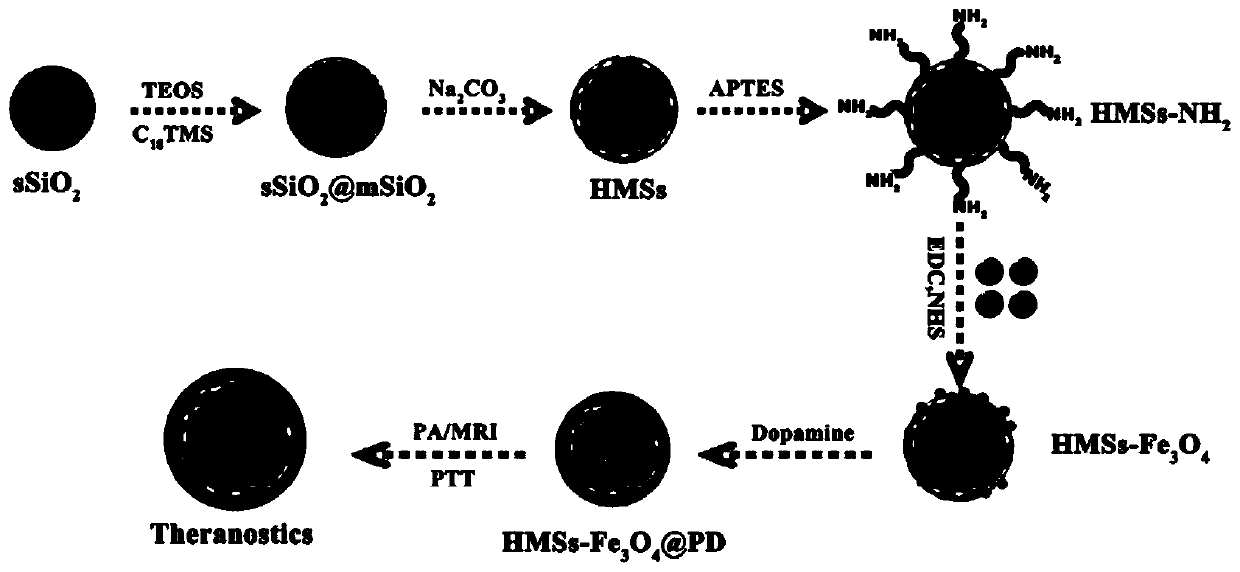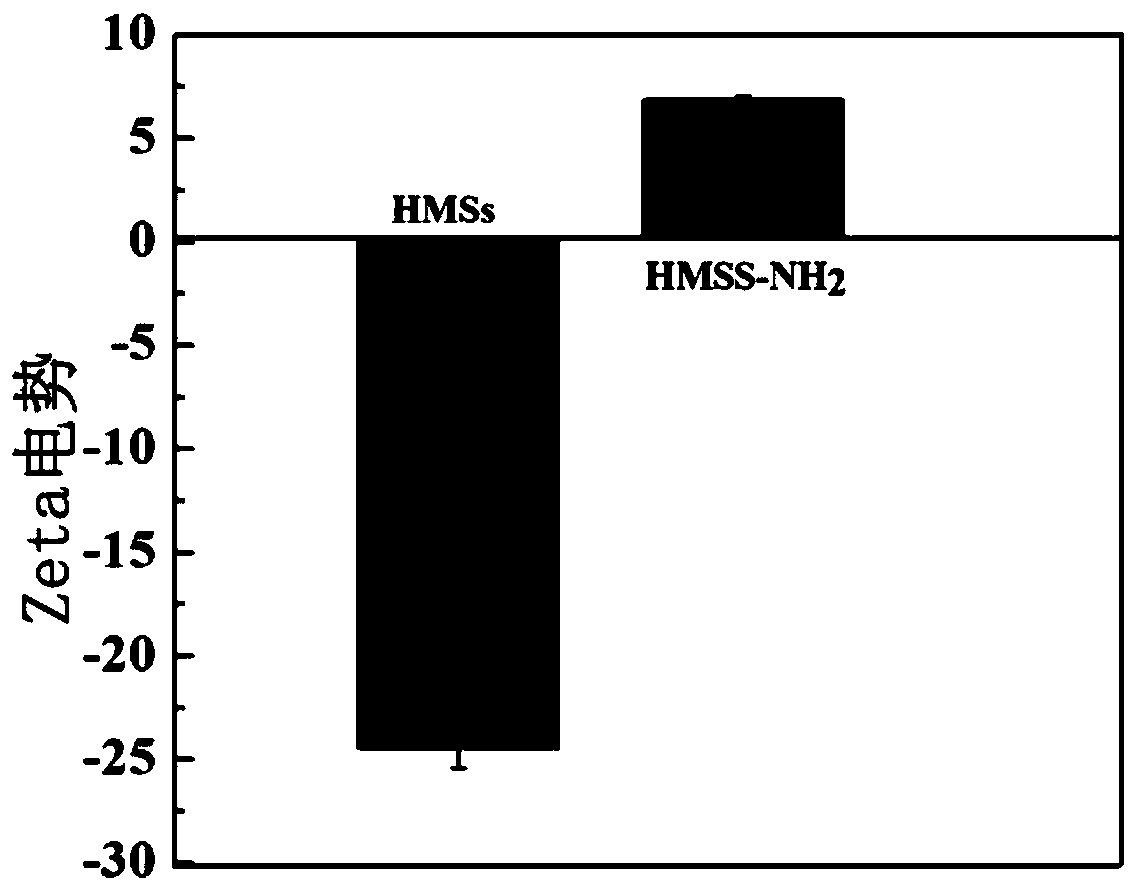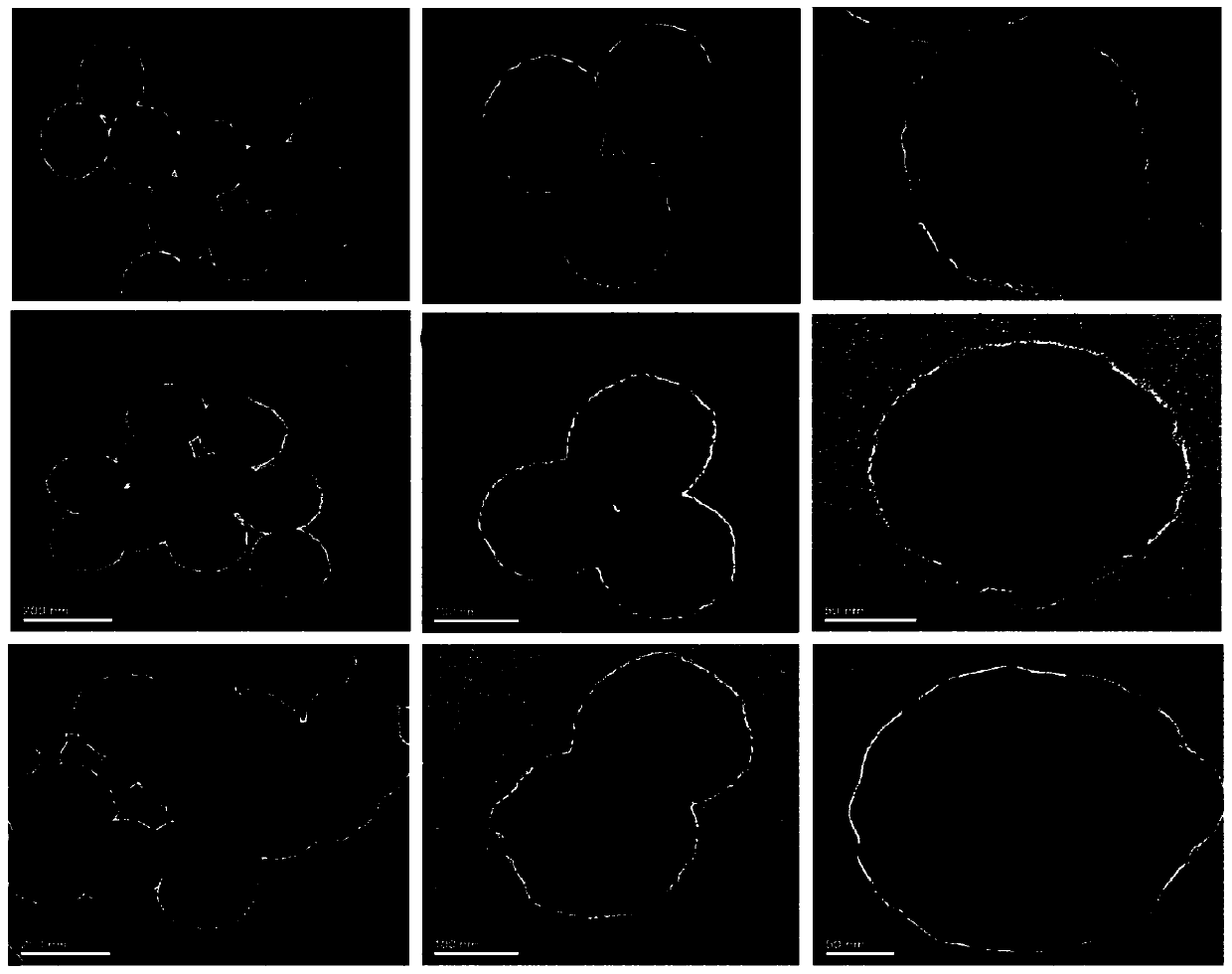A magnetic mesoporous silica nanomaterial wrapped with polydopamine and its preparation and application
A technology of mesoporous silica and polydopamine, which is applied to preparations for in vivo experiments, materials for wave energy or particle radiation treatment, medical preparations containing active ingredients, etc. low effect
- Summary
- Abstract
- Description
- Claims
- Application Information
AI Technical Summary
Problems solved by technology
Method used
Image
Examples
Embodiment 1
[0048] Preparation of HMSs-Fe 3 o 4 The specific process of / PD NPs nanomaterials is as follows: figure 1 shown.
[0049] (1) Dissolve 100mg of hollow mesoporous silica (HMSs) in 50mL of ethanol, add propyltriethoxysilane (APTES) dropwise, reflux in an oil bath at 70-80°C for 4h, and centrifuge at 8500r / min collected, washed 3 times with ultrapure water, and obtained amino-modified hollow mesoporous silica (HMSs-NH 2 ). Zeta potential test results show that the surface of hollow mesoporous silica is successfully modified with amino groups ( figure 2 ).
[0050] (2) 1-(3-dimethylaminopropyl)-3-ethylcarbodiimide hydrochloride / N-hydroxysuccinimide activated ultra-small ferric oxide Fe 3 o 4 Adding HMSs-NH to NPs solution 2 solution, stirred and reacted for 3 days, collected by centrifugation and washed to obtain ultra-small hollow mesoporous silica nanoparticles HMSs-Fe 3 o 4 NPs. TEM test results show that: Fe with a diameter of about 3nm 3 o 4 NPs loading to HMSs...
Embodiment 2
[0053] Take the product obtained in (3) in Example 1 and use ultrapure water to prepare a mother solution with a concentration of 200 μg / mL, then gradiently dilute it to nanomaterials of 100, 50, 20 and 10 μg / mL, and irradiate a series of concentration materials at 808nm laser (output power 1.2W / cm 2 , irradiated for 5 min), and an equal volume of ultrapure water was used as a blank control. HMSs-Fe 3 o 4 / PD NPs nanomaterials temperature rise performance test results show that: within the test concentration range, HMSs-Fe 3 o 4 / PD NPs nanomaterials exhibit excellent photothermal conversion effect, and with the increase of nanomaterial concentration, the temperature increases more obviously ( Figure 6 ). At the same concentration (200μg / mL), the output power was 0.2, 0.4, 0.6, 0.8, 1.0 and 1.2W / cm 2 The laser was irradiated for 5 minutes, and the temperature change was observed. The results showed that: with the increase of the output power, the temperature increased m...
Embodiment 3
[0055] Prepare ultra-small Fe with Fe concentrations of 0, 0.3, 0.6, 1.2 and 2.4mM, respectively 3 o 4 NPs and HMSs-Fe 3 o 4 / PD NPs aqueous solution 1mL, the T of the material at different Fe concentrations was measured by a magnetic resonance imaging analyzer 1 relaxation effect ( Figure 8 ). By calculating the Fe 3 o 4 NPs and HMSs-Fe 3 o 4 r of PD NPs 1 values of 0.64 and 1.27mM, respectively -1 the s -1 . It shows that ultra-small iron oxide nanoparticles have enhanced r after being coated with mesoporous silica 1 relaxation rate, which can be used for enhanced T 1 Magnetic resonance imaging.
PUM
| Property | Measurement | Unit |
|---|---|---|
| particle diameter | aaaaa | aaaaa |
Abstract
Description
Claims
Application Information
 Login to View More
Login to View More - R&D
- Intellectual Property
- Life Sciences
- Materials
- Tech Scout
- Unparalleled Data Quality
- Higher Quality Content
- 60% Fewer Hallucinations
Browse by: Latest US Patents, China's latest patents, Technical Efficacy Thesaurus, Application Domain, Technology Topic, Popular Technical Reports.
© 2025 PatSnap. All rights reserved.Legal|Privacy policy|Modern Slavery Act Transparency Statement|Sitemap|About US| Contact US: help@patsnap.com



